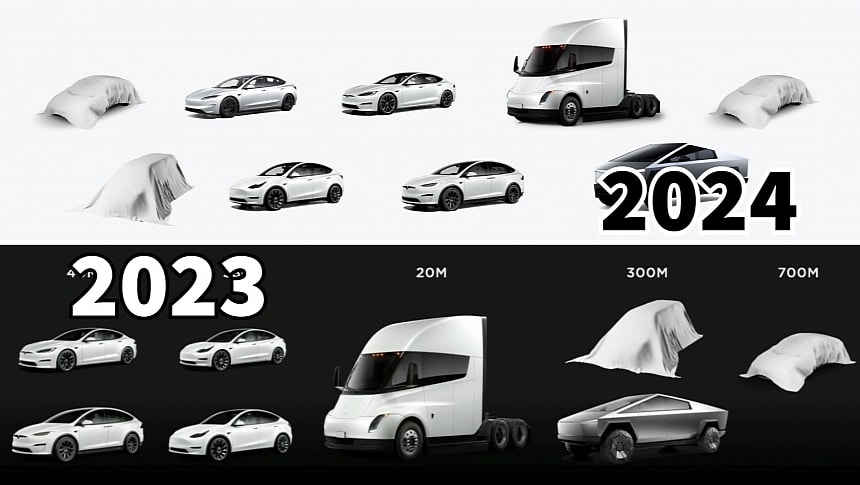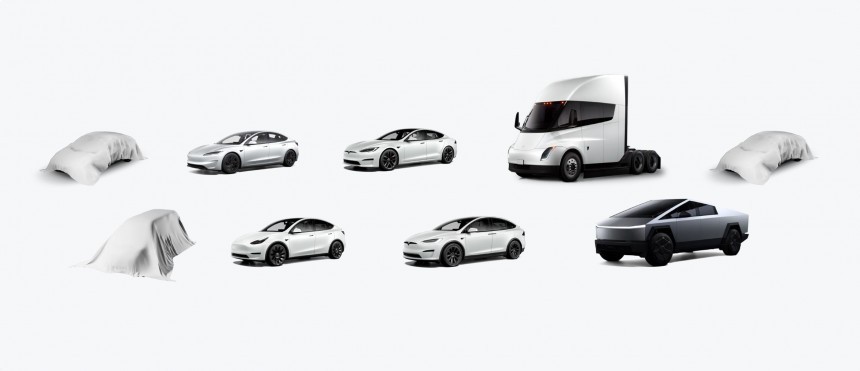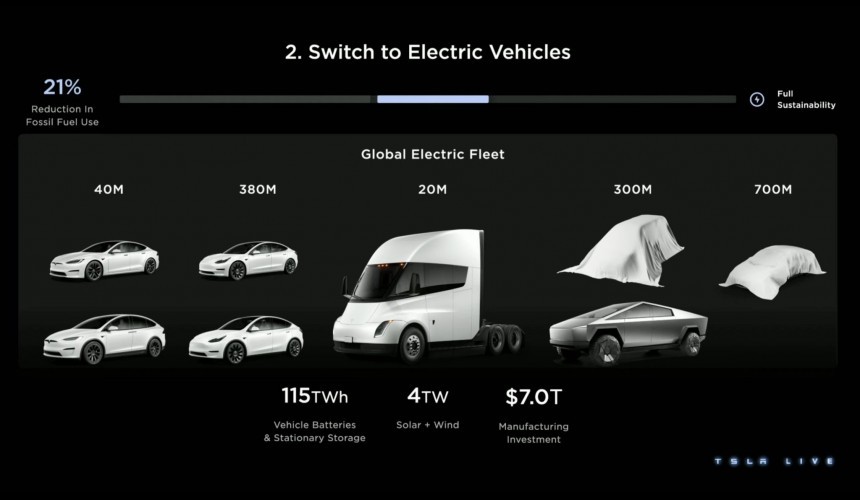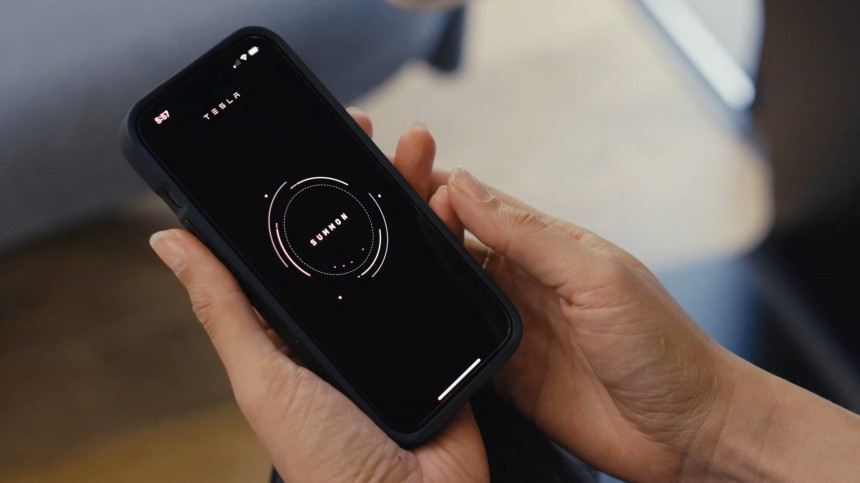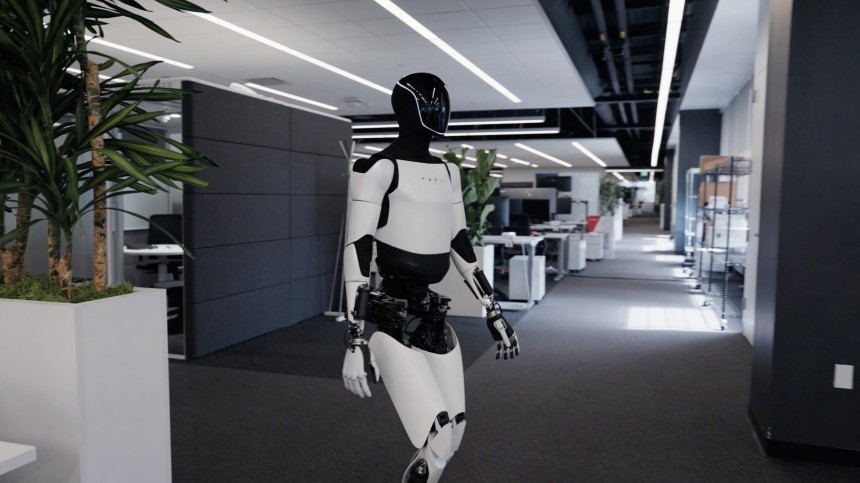This year's shareholder meeting, dubbed Cyber Roundup, was all about approving Elon Musk's compensation plan and incorporating Tesla into Texas. However, Tesla's CEO delivered an enthusiastic keynote speech, revealing jaw-dropping details about the company's plans. These include new vehicle projects, artificial intelligence, robotics, and autonomous driving.
This year's annual shareholder meeting was unusual, coming at difficult times for Tesla and its outspoken CEO, Elon Musk. The market conditions have changed, and the first quarter results mirrored this brutally. Elon Musk panicked and started massive layoffs, sometimes indiscriminately wiping out entire teams, crippling critical operations. Lawsuits filed by disgruntled investors poured in, including a successful one to block Musk's massive compensation package, which he was awarded after a controversial 2018 vote.
This is why this year's shareholder meeting was mostly about re-instating Musk's package and retaliating against the state of Delaware (where the lawsuit was filed) by re-domesticating Tesla to Texas. Musk was very active in explaining why these proposals were important forhim the company, spending a lot of money on advertising. This was the first time Musk showed that he actually believed in advertising after refusing to do so for Tesla products.
However, after all these proposals were voted on according to the Tesla Board's recommendation, an energized Elon Musk put out an impressive show. Tesla CEO jumped and danced on stage, spending almost an hour discussing Tesla's many businesses and projects. This was easily one of Musk's most information-dense keynote speeches in years. Even so, he dodged some important questions while offering no details on some slides in the shareholder deck. Here are the hottest topics Musk discussed or avoided during the Cyber Roundup.
The slide looks pretty much identical to the one from last year's Investor Day, depicting the silhouettes of a small vehicle and a larger van or SUV. The only difference is that this year's shareholder deck includes a third shrouded model, seemingly identical to the compact EV. Since Musk didn't discuss the slide, investors, fans, and the public remained with big question marks.
Before we let the imagination go wild, let's talk about the shape of the vehicles on the slide. This is unlikely to reveal anything, especially as Musk changed his mind several times about Tesla's future models. Last year, he reluctantly agreed to launch a compact EV and a robotaxi, which many believed were depicted on the 2023 Investor Day slide. Last year, there was only a robotaxi in the cards, but we have no idea how big or what type of vehicle it would be.
During the first quarter earnings call, Tesla said it would launch "new vehicles, including more affordable models, utilizing aspects of the next generation platform as well as aspects of its current platforms." These would be based on the Gen-2 platform, like the Model 3/Y, but with elements of the Gen-3 architecture to optimize costs. It's unclear what the new vehicles in this year's slide might be. If anything, they appear to be just placeholders, considering that the two smaller silhouettes are identical.
However, the 2023 presentation offered a hint, thanks to the EV models being grouped based on their respective architectures. The larger model appears to share the platform with the Cybertruck. Is the upcoming robotaxi a large SUV derived from the Cybertruck? That would justify the Cybercab name that Elon Musk gave it. Let's not forget that Waymo started robotaxi operations with a Chrysler Pacifica minivan before moving to the Jaguar I-Pace SUV.
I'd argue that what Tesla plans for its automotive division is not at all important to Elon Musk at the moment. He barely spent a few minutes discussing Tesla vehicles before moving to topics like vehicle autonomy, artificial intelligence, and robotics. These are the new shiny toys, and I wouldn't be surprised to see Tesla stepping aside and letting others build electric vehicles while focusing on fringe tech instead. After all, did anyone see the Roadster 2.0 on that slide? Me neither, although it's supposed to start deliveries next year.
Musk described himself as a pathological optimist, adding that he believes vehicle autonomy will come sooner than expected. When this happens, the potential for Tesla is huge, possibly turning it into a $5 trillion company, ten times more valuable than it is today. Musk sees autonomy as the most important revenue stream besides the Optimus robot, opening new opportunities for Tesla to monetize its vehicle fleet.
The most obvious way to make money out of this is by operating its own fleet of autonomous vehicles. Musk compared this to Uber, which should feel threatened by Tesla moving into the robotaxi business. However, this would also offer a new opportunity for existing Tesla owners, who will be able to sign up their vehicles for the service. Tesla's CEO likened it to Airbnb, with owners adding their cars to the robotaxi fleet while on vacation or working.
The owners will have complete control over how their vehicles will be used. They can summon them when they need them and, later, send them back to work. The money made by the car owner should far exceed the monthly payments. Tesla will take a share of the revenue, but most of the money will go to the owner. However, for this to work, Tesla will need to sort out Full Self-Driving, which deserves a dedicated chapter in Musk's presentation.
He also talked about the future FSD builds, which Tesla still offers as V12 point releases despite bringing radical changes, amounting to a full new version. The best example is FSD V12.4, for which Tesla has completely retrained the neural network models. The FSD V12.5 and V12.6 builds will be just as revolutionary, bringing new features and ironing out edge-case issues. Musk thinks each iteration will bring a 2-5X increase in performance, making it possible to reach unsupervised (Level 4+) FSD.
Musk reiterated that Tesla is no longer compute-constrained and explained that the most difficult part is not neural network training but improving the number of miles between interventions. It's difficult to assess progress from one build to another when you target thousands or tens of thousands of miles between interventions. That's the amount of driving a normal person does in a year, which makes it even more difficult to assess this in an urban environment.
Thankfully, Tesla has a giant fleet, which allows it to test new FSD builds in "shadow mode," presumably by comparing what the software and the unsuspecting driver did in a particular situation. Using this method, which is transparent to the people driving their Teslas, Tesla can simulate billions of miles of driving, something that no other company can match. Musk is confident that the Tesla FSD software will exceed human driving safety as more data is analyzed.
Tesla's CEO admitted that more free FSD trials are needed to convince people to subscribe. He announced that Tesla might offer a new free trial every time a major update is released. In this case, the trial period will be shorter than for new customers, two weeks instead of one month. This would allow owners to evaluate progress. However, don't expect these free trials to be offered often. Tesla usually releases one major FSD version per year.
The new facility will house a supercomputer that would allow Tesla to gear up neural network training for its self-driving software. This includes a Hardware-4-specific model for the first time, unlocking the full potential of HW4 vehicles. Despite being 3-8 times more powerful than a Hardware 3 computer, Tesla still uses HW4 to run HW3 in emulation mode. For this, Tesla downsizes the images taken by the higher-resolution HW4 cameras to be processed using the same neural network models designed for Hardware 3.
The new data center will offer breathing room for HW4 training. However, Tesla is already working on the next iteration of hardware. Previously known as Hardware 5, this has gained a new name, as Musk revealed during the annual shareholder meeting: AI 5. This emphasizes its AI capabilities, which would be 10 times better than Hardware 4. Musk estimated that the new AI 5 Autopilot computer would launch in about 18 months.
The AI 5 computer will reach 700-800 watts of computing power, compared to about 300 watts in the case of HW3 and HW4 computers. However, Musk said it would be very energy efficient, especially as it will not run at full power all the time. The AI 5 chips would have so much compute power to spare that Musk is considering using it for distributed computing, opening a new opportunity for monetization.
Musk likened the new AI 5 processing capabilities to Amazon's Web Services (AWS) cloud, thanks to all these AI 5 chips in millions of Tesla vehicles around the world. This will allow owners to earn money similar to how they do it with the robotaxi model by renting their vehicles' computing power to Tesla or third parties while the car is not in use. The best part is that Tesla will use the same hardware for another of Musk's beloved projects, the Optimus humanoid robot.
Although it seems like a risky bet, Musk is confident in Optimus' potential to lead Tesla to a $25 trillion valuation. Tesla could build Optimus at scale for about $10,000 while selling it commercially for $20,000. Musk said that Tesla could capture at least 10% of an emerging humanoid robot market, estimated to be one billion robots per year. This could mean a trillion dollars per year in profit for Tesla, a calculation that led Musk to predict the $25 trillion market cap figure.
We've already seen the Optimus robots walking clumsily or learning to manipulate things, but it appears that Tesla is quite advanced in development. Musk revealed that two Optimus robots are already working in Tesla's factories, handling tasks autonomously. Moreover, Musk thinks that over 1,000 humanoid robots will join them by next year. That's also when Tesla could start commercial production, a goal Musk reiterated during the Cyber Roundup.
Of course, let's not forget that Musk also admitted he is a pathological optimist, and everything he predicts should be taken with a grain of salt. The Optimus progress is probably less advanced than Musk is letting us know, but that doesn't mean the robot revolution is not happening as we speak. However, for Optimus to work, Tesla still needs to solve FSD, which is also the software that allows Optimus to navigate the world. That's how interconnected these Tesla projects are.
This is why this year's shareholder meeting was mostly about re-instating Musk's package and retaliating against the state of Delaware (where the lawsuit was filed) by re-domesticating Tesla to Texas. Musk was very active in explaining why these proposals were important for
However, after all these proposals were voted on according to the Tesla Board's recommendation, an energized Elon Musk put out an impressive show. Tesla CEO jumped and danced on stage, spending almost an hour discussing Tesla's many businesses and projects. This was easily one of Musk's most information-dense keynote speeches in years. Even so, he dodged some important questions while offering no details on some slides in the shareholder deck. Here are the hottest topics Musk discussed or avoided during the Cyber Roundup.
What are these three mysterious new vehicles?
Browsing the shareholder deck seemed surprisingly boring at first sight, with more of the same topics covered every time. While these might be exciting for institutional investors, it's hard to make one's hard beat faster. Avoided emissions, sustainable manufacturing, and employee safety standards would make a regular guy fall asleep faster than a lullaby. However, one slide was particularly intriguing: the one showing Tesla's current and future lineup.Before we let the imagination go wild, let's talk about the shape of the vehicles on the slide. This is unlikely to reveal anything, especially as Musk changed his mind several times about Tesla's future models. Last year, he reluctantly agreed to launch a compact EV and a robotaxi, which many believed were depicted on the 2023 Investor Day slide. Last year, there was only a robotaxi in the cards, but we have no idea how big or what type of vehicle it would be.
During the first quarter earnings call, Tesla said it would launch "new vehicles, including more affordable models, utilizing aspects of the next generation platform as well as aspects of its current platforms." These would be based on the Gen-2 platform, like the Model 3/Y, but with elements of the Gen-3 architecture to optimize costs. It's unclear what the new vehicles in this year's slide might be. If anything, they appear to be just placeholders, considering that the two smaller silhouettes are identical.
However, the 2023 presentation offered a hint, thanks to the EV models being grouped based on their respective architectures. The larger model appears to share the platform with the Cybertruck. Is the upcoming robotaxi a large SUV derived from the Cybertruck? That would justify the Cybercab name that Elon Musk gave it. Let's not forget that Waymo started robotaxi operations with a Chrysler Pacifica minivan before moving to the Jaguar I-Pace SUV.
Back to that Tesla Robotaxi: what do we know about it?
Obviously, Elon Musk didn't offer any details about the vehicle itself, although this is the least interesting part. Tesla CEO was more vocal about the enablers of vehicle autonomy that would make a Tesla robotaxi possible, including the FSD software. He also offered his wisdom on why he believes autonomous driving is crucial for Tesla, something he said many times before. He also talked about Tesla's ride-hailing service and how existing owners would benefit from it.Musk described himself as a pathological optimist, adding that he believes vehicle autonomy will come sooner than expected. When this happens, the potential for Tesla is huge, possibly turning it into a $5 trillion company, ten times more valuable than it is today. Musk sees autonomy as the most important revenue stream besides the Optimus robot, opening new opportunities for Tesla to monetize its vehicle fleet.
The most obvious way to make money out of this is by operating its own fleet of autonomous vehicles. Musk compared this to Uber, which should feel threatened by Tesla moving into the robotaxi business. However, this would also offer a new opportunity for existing Tesla owners, who will be able to sign up their vehicles for the service. Tesla's CEO likened it to Airbnb, with owners adding their cars to the robotaxi fleet while on vacation or working.
Is Tesla that close to cracking Full Self-Driving?
As expected, Tesla's FSD software is one of Musk's dearest projects, allowing him to project Tesla as an artificial intelligence (AI) company. Tesla started from scratch, designing its own software, and is on track to becoming the leader of the AI world. Musk emphasized the exponential progress brought by each subsequent FSD iteration.He also talked about the future FSD builds, which Tesla still offers as V12 point releases despite bringing radical changes, amounting to a full new version. The best example is FSD V12.4, for which Tesla has completely retrained the neural network models. The FSD V12.5 and V12.6 builds will be just as revolutionary, bringing new features and ironing out edge-case issues. Musk thinks each iteration will bring a 2-5X increase in performance, making it possible to reach unsupervised (Level 4+) FSD.
Musk reiterated that Tesla is no longer compute-constrained and explained that the most difficult part is not neural network training but improving the number of miles between interventions. It's difficult to assess progress from one build to another when you target thousands or tens of thousands of miles between interventions. That's the amount of driving a normal person does in a year, which makes it even more difficult to assess this in an urban environment.
Tesla's CEO admitted that more free FSD trials are needed to convince people to subscribe. He announced that Tesla might offer a new free trial every time a major update is released. In this case, the trial period will be shorter than for new customers, two weeks instead of one month. This would allow owners to evaluate progress. However, don't expect these free trials to be offered often. Tesla usually releases one major FSD version per year.
The hardware factor: expect a major leap in FSD performance soon
Even though Elon Musk sees Tesla as a software, AI-driven company, there's no question about it being an engineering and manufacturing powerhouse. This combination of factors makes Tesla a difficult opponent to go against. Tesla FSD is making progress, as detailed above, but Elon Musk announced that things will get into overdrive once Tesla turns on its new data center it builds south of the Giga Texas compound.The new facility will house a supercomputer that would allow Tesla to gear up neural network training for its self-driving software. This includes a Hardware-4-specific model for the first time, unlocking the full potential of HW4 vehicles. Despite being 3-8 times more powerful than a Hardware 3 computer, Tesla still uses HW4 to run HW3 in emulation mode. For this, Tesla downsizes the images taken by the higher-resolution HW4 cameras to be processed using the same neural network models designed for Hardware 3.
The AI 5 computer will reach 700-800 watts of computing power, compared to about 300 watts in the case of HW3 and HW4 computers. However, Musk said it would be very energy efficient, especially as it will not run at full power all the time. The AI 5 chips would have so much compute power to spare that Musk is considering using it for distributed computing, opening a new opportunity for monetization.
Musk likened the new AI 5 processing capabilities to Amazon's Web Services (AWS) cloud, thanks to all these AI 5 chips in millions of Tesla vehicles around the world. This will allow owners to earn money similar to how they do it with the robotaxi model by renting their vehicles' computing power to Tesla or third parties while the car is not in use. The best part is that Tesla will use the same hardware for another of Musk's beloved projects, the Optimus humanoid robot.
The Optimus humanoid robot is Tesla's wildest bet
Having started it with a dancer dressed like a robot only three years ago, Tesla has made tremendous progress with its humanoid robot project. Optimus reached the second generation in December 2023, gaining new human abilities thanks to a redesigned hand. This offers 11 degrees of freedom, allowing delicate and precise movements that only humans can match. However, this is nothing compared to the upcoming hands with 22 degrees of freedom. They should enable Optimus to play the piano like a virtuoso.We've already seen the Optimus robots walking clumsily or learning to manipulate things, but it appears that Tesla is quite advanced in development. Musk revealed that two Optimus robots are already working in Tesla's factories, handling tasks autonomously. Moreover, Musk thinks that over 1,000 humanoid robots will join them by next year. That's also when Tesla could start commercial production, a goal Musk reiterated during the Cyber Roundup.
Of course, let's not forget that Musk also admitted he is a pathological optimist, and everything he predicts should be taken with a grain of salt. The Optimus progress is probably less advanced than Musk is letting us know, but that doesn't mean the robot revolution is not happening as we speak. However, for Optimus to work, Tesla still needs to solve FSD, which is also the software that allows Optimus to navigate the world. That's how interconnected these Tesla projects are.
